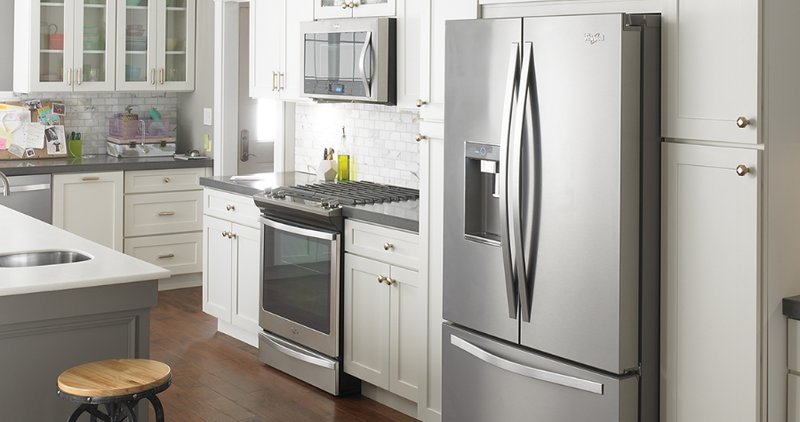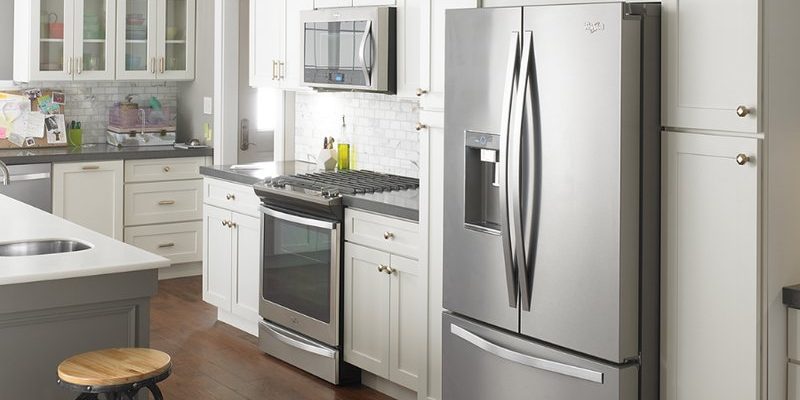
Warranty registration’s supposed to be your safety net when things go wrong. But the catch is that most folks picture registering something they bought themselves, with their name on the receipt. If you’ve got a gifted Whirlpool appliance, you might feel caught in limbo. Is your warranty valid? Are you on the hook if a button stops working or the motor starts acting up? Here’s the thing: Whirlpool’s warranty process isn’t as intimidating as it sounds. Let’s untangle it, step by step.
How Warranty Registration Works With Whirlpool Appliances
Before we dive into gifted appliances, it helps to know the basics of how Whirlpool’s warranty system operates. When you buy a new Whirlpool kitchen appliance—maybe a dishwasher, a stove, or a fridge—it comes with a limited manufacturer warranty. This warranty usually covers any defects in materials or workmanship for a set period (often one year from the purchase date, sometimes longer for major components).
Registering your appliance with Whirlpool serves a couple of purposes:
- It helps Whirlpool confirm when your warranty period started (usually based on your purchase date).
- It links your contact details to your appliance, so you can quickly get support or schedule repairs.
- It sometimes unlocks perks, tips, or easier troubleshooting steps tailored to your exact model.
You don’t have to register your Whirlpool appliance for the warranty to apply—your original purchase receipt is what really matters. But registering can make things a *lot* smoother, especially if you need to code in for troubleshooting or pair your registration info when calling customer service.
Can Gifted Whirlpool Appliances Be Registered For Warranty?
Here’s where things get interesting. If someone gifted you a Whirlpool kitchen appliance, you’re probably not the person who paid for it. Honestly, this worries people—especially if the appliance is brand new and the warranty hasn’t started ticking down yet. But Whirlpool isn’t out to trip you up.
You can register a gifted Whirlpool appliance for warranty coverage. But there are a couple of conditions:
- It must be a new, unused appliance. If your gift is still in the box, you’re set. If it’s gently used or open box, you may have fewer options.
- You need the purchase information. This usually means a copy of the original receipt or proof of purchase. Often, the gift-giver can supply this (even if it’s just a photo of their receipt).
Registering online through the Whirlpool site or by phone is straightforward—just be ready to enter the model number, serial number, and purchase details. Whirlpool’s system doesn’t care who bought the appliance, as long as the purchase can be verified and it’s still within the warranty window.
If you received a Whirlpool dishwasher as a wedding present, for example, grab the paperwork and head to the registration page. Don’t stress about whose name is on the credit card—the *warranty follows the product*, not the buyer.
What If You Don’t Have the Gift Receipt?
You might be wondering: what if your aunt tossed the receipt, or you got your Whirlpool fridge secondhand from a friend who’s already lost the paperwork? That’s where things get trickier.
Whirlpool’s official stance is that the warranty period begins on the date of purchase, as proven by the receipt. If you don’t have a receipt, Whirlpool usually defaults to the appliance’s manufacturing date—determined by the serial number. This can cause a little headache:
- Your warranty period may start earlier than you thought (for example, from the day the appliance left the factory, not the day you received it).
- If the appliance was sitting in a warehouse or on a shelf for months before being gifted, you might lose some warranty time.
Still, if you’re missing a receipt, it’s worth a shot to register the appliance anyway. Sometimes customer service can help. Mention the circumstances clearly when you call or fill out the online form. Sometimes they’ll bend the rules, especially if the serial number shows a recent manufacturing date.
The Steps To Register Your Gifted Whirlpool Appliance
Let me walk you through the process. Even if you’ve never registered a warranty before, Whirlpool’s system is designed to be beginner-friendly. Here’s what you’ll generally need to do:
- Locate the model and serial number. Usually, you’ll find these on a sticker inside the appliance door, on the back, or in the paperwork included in the box.
- Gather the purchase information. Ideally, get the original receipt from the person who gifted you the appliance. A clear photo works if you can’t have the physical copy.
- Head to Whirlpool’s warranty registration page. There’s an easy online form where you’ll enter your details, the appliance info, and the purchase date.
- Submit the registration and save your confirmation. Print or save the email confirmation in case you need to reference it for troubleshooting, repairs, or warranty claims.
You don’t need to code, sync, or reset anything to register—think of this as pairing your contact details with your appliance in Whirlpool’s system. If you hit any snags, their customer service (online chat or phone) is generally patient and helpful with new owners.
Are There Any Differences Compared To Registering As The Buyer?
Here’s the thing: once you’ve registered a gifted Whirlpool appliance, you’re treated just like the original purchaser for warranty support—as long as you’ve got that crucial proof of purchase. What matters most to Whirlpool is when the warranty period started, not who the first owner was.
That said, there are a few real-world wrinkles to keep in mind:
- If the appliance was bought from an **authorized retailer**, great! Your warranty is valid. If purchased secondhand or from an unauthorized seller, coverage may be limited or void.
- Some major components (like the compressor on fridges) might require *additional registration* for extended warranty periods. Double-check what’s included and what steps to take for specific models.
- If you ever need service, Whirlpool may ask for the original receipt. Keep a digital backup handy, just in case the battery in your phone decides to die at the worst moment.
So, you’re not missing out by being the recipient instead of the buyer. Just make sure you dot your i’s and cross your t’s with the paperwork.
What If The Appliance Was Used, Open-Box, or Refurbished?
Now, not every “gifted” appliance is straight from a store shelf. Sometimes you inherit a gently-used Whirlpool microwave, or your friend upgrades and gifts you their barely-touched stove. Here’s where the rules shift.
Manufacturer warranties typically only apply to *new, unused appliances* bought from authorized dealers. If your Whirlpool appliance is used, open-box, or refurbished, the original warranty may not transfer—or could be voided altogether. Some exceptions exist:
- If the appliance was simply opened but never used, and you have all the original paperwork, you might be fine.
- Certified refurbished appliances sometimes include their own limited warranty, which you can register (again, using the included proof of purchase).
But for most secondhand or used gifts, you’ll want to look for alternative protection. Is there a store warranty, or an extended plan (like those third-party “protection plans” you can sync with your purchase)? If so, check if it’s transferable. Otherwise, you may be rolling the dice.
Universal vs. Brand-Specific Registration: Why Whirlpool Matters
You might be tempted to skip Whirlpool’s own process and just jot down the serial number somewhere for your own records. Or maybe you’ve heard of “universal warranty registration” sites that claim to cover everything in your kitchen.
Here’s why it’s smart to stick with the official Whirlpool process:
- Troubleshooting and support. Registering directly with Whirlpool makes it easier to get code-based help, schedule repairs, or request parts. Their team works from your registration info, not a generic warranty database.
- Recalls and safety notifications. If there’s ever a recall or firmware update for your exact model, Whirlpool can contact you directly.
- Faster results if you need service. Service techs can pair your appliance with their records, meaning fewer delays if you’re stuck with a reset error or an odd battery issue on a smart appliance.
In short: register your gifted Whirlpool appliance with the brand itself. Universal paperwork isn’t a substitute—it’s more like scribbling your phone number on a sticky note and hoping someone finds it.
Troubleshooting Common Problems With Gifted Warranty Registration
Not everything goes smoothly, of course. Some of the most common hiccups with registering a gifted Whirlpool appliance include:
- Missing or illegible serial number. Appliances sometimes get scratched, or stickers fall off. Call Whirlpool’s support—they *can* help track down the info using the model or even through an in-person tech visit.
- Registering outside the warranty window. If too much time has passed since the purchase date, the official warranty may be expired. Ask about extended protection plans or out-of-warranty repairs.
- Confusion over multiple owners. Whirlpool doesn’t care about the “chain of custody”—they care about the purchase date and proof. Register with your own contact info, not the gift-giver’s.
The key is to stay proactive. Gather as much info as you can, keep records, and don’t be shy about calling Whirlpool support. They deal with these situations every day, and it’s usually easier to sort out than it first looks.
So, Should You Register Your Gifted Whirlpool Appliance?
Let’s wrap this up: if you’ve received a Whirlpool kitchen appliance as a gift—whether it’s a mixer, microwave, or a whole fridge—it’s almost always worth registering it for warranty. You get peace of mind, easier troubleshooting, and speedier support if anything ever glitches or goes haywire. As long as you have that all-important proof of purchase, you’re treated just like someone who picked it up at the store themselves.
And hey, if you’ve misplaced the receipt or inherited the appliance, don’t panic. You might not have every warranty benefit, but Whirlpool’s still worth contacting for help or alternatives. In the end, it’s just about protecting your new kitchen sidekick so you can enjoy it, worry-free—no matter how it landed on your countertop.
